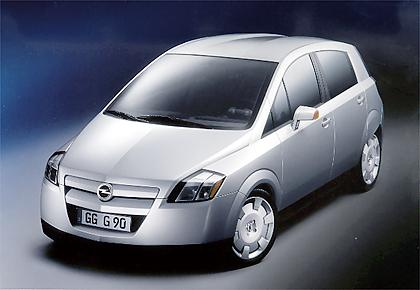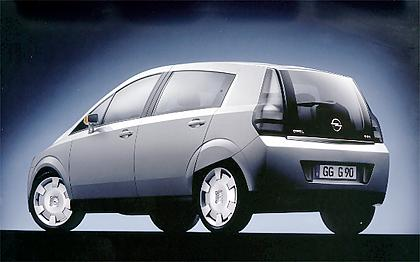1999 Opel G90
- Story Cars

- Oct 11, 2021
- 2 min read
A combination of good aerodynamics with an extremely low drag coefficient of 0.22 and lightweight construction of 750kg enables the car to achieve incredibly high fuel consumption. The G90 manages to suppress CO2 emissions to just 90g per 1km.
Vision
As new, stricter European emission standards were announced for the future, Opel Advanced Engineering and Design departments were already figuring out what a cleaner compact car could look like in the future. They presented the extremely low-emission G90 Concept at the 1999 IAA. The name was chosen because the CO2 emission from the 60 HP gasoline engine is a mere 90 g per km. This represents MVEG-standard fuel consumption of 3.88 liters per 100 km!
Technology
This exceptionally low fuel consumption for a spacious four-seater was achieved by using weight-saving materials and an amazing drag coefficient of cD = 0.22. The G90 weighed only 750 kilograms. The G90's power plant was the Corsa's extremely efficient three-cylinder ECOTEC unit. This 12-valve engine has an output of 44 kW (60 HP) and maximum torque of 85 Nm at 2,800 rpm.
Exterior
The contours of the G90 gave an insight into Opel's future body language. The very individual study hinted at recognizable Opel design cues such as the kink below the windows, the bold wheel arches, and the V-shaped radiator grille with its large Opel emblem. It also pointed the way to Opel's future styling intentions. This is exemplified in the raised line running down the center of the engine hood and the styling and technology of the LED headlamps.
Interior
Innovative ideas also abound in the passenger compartment, where the guiding principle of "Less is More" was applied. The car weighs less and has lower fuel consumption than comparable cars, but it also has distinctly fewer switches and buttons. The T-shaped technology carrier houses the audio and mobile phone module, the climate control system, and the navigation system with an ergonomically placed 5-inch screen display.
Source: Opel














































Comments